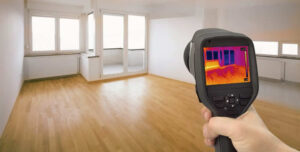Just how to Examine If Your Home Has a Concealed Leakage
Just how to Examine If Your Home Has a Concealed Leakage
Blog Article
Are you hunting for know-how around Locating water leaks?

Early discovery of dripping water lines can reduce a prospective catastrophe. Some little water leaks might not be noticeable.
1. Examine the Water Meter
Every home has a water meter. Examining it is a proven manner in which helps you uncover leaks. For beginners, switch off all the water sources. Ensure no person will certainly purge, make use of the faucet, shower, run the washing device or dishwasher. From there, go to the meter and watch if it will certainly transform. Given that nobody is using it, there should be no motions. If it moves, that suggests a fast-moving leak. Similarly, if you identify no changes, wait a hr or 2 and also check back once more. This suggests you may have a sluggish leakage that can even be underground.
2. Check Water Consumption
If you spot sudden changes, despite your consumption being the very same, it suggests that you have leaks in your plumbing system. An abrupt spike in your costs suggests a fast-moving leakage.
Meanwhile, a steady boost monthly, even with the exact same behaviors, shows you have a sluggish leakage that's likewise gradually intensifying. Call a plumber to thoroughly examine your home, especially if you really feel a cozy location on your flooring with piping beneath.
3. Do a Food Coloring Examination
30% comes from bathrooms when it comes to water usage. Test to see if they are running correctly. Drop specks of food shade in the storage tank as well as wait 10 mins. If the shade in some way infiltrates your bowl during that time without flushing, there's a leak in between the tank as well as bowl.
4. Asses Exterior Lines
Do not neglect to inspect your exterior water lines as well. Must water leak out of the link, you have a loose rubber gasket. One little leak can lose loads of water as well as spike your water bill.
5. Examine the scenario as well as check
Home owners should make it a habit to examine under the sink counters as well as even inside cabinets for any type of bad odor or mold and mildew development. These two warnings suggest a leak so prompt interest is needed. Doing routine assessments, also bi-annually, can save you from a significant trouble.
If you know your house is currently old, maintain a careful eye on your heaters, hose pipes, pipes etc. Look for stainings and deteriorating as a lot of home appliances as well as pipes have a life expectancy. They will also normally degrade because of deterioration. If you suspect dripping water lines in your plumbing system, don't await it to rise. Call a professional plumber right now so you do not wind up with a terrible mess in your home.
Early discovery of leaking water lines can minimize a potential disaster. Some little water leakages may not be noticeable. Inspecting it is a guaranteed means that helps you find leakages. One little leakage can throw away heaps of water as well as surge your water expense.
If you suspect leaking water lines in your plumbing system, don't wait for it to rise.
WARNING SIGNS OF WATER LEAKAGE BEHIND THE WALL
PERSISTENT MUSTY ODORS
As water slowly drips from a leaky pipe inside the wall, flooring and sheetrock stay damp and develop an odor similar to wet cardboard. It generates a musty smell that can help you find hidden leaks.
MOLD IN UNUSUAL AREAS
Mold usually grows in wet areas like kitchens, baths and laundry rooms. If you spot the stuff on walls or baseboards in other rooms of the house, it’s a good indicator of undetected water leaks.
STAINS THAT GROW
When mold thrives around a leaky pipe, it sometimes takes hold on the inside surface of the affected wall. A growing stain on otherwise clean sheetrock is often your sign of a hidden plumbing problem.
PEELING OR BUBBLING WALLPAPER / PAINT
This clue is easy to miss in rooms that don’t get much use. When you see wallpaper separating along seams or paint bubbling or flaking off the wall, blame sheetrock that stays wet because of an undetected leak.
BUCKLED CEILINGS AND STAINED FLOORS
If ceilings or floors in bathrooms, kitchens or laundry areas develop structural problems, don’t rule out constant damp inside the walls. Wet sheetrock can affect adjacent framing, flooring and ceilings.
https://www.servicemasterbyzaba.com/blog/how-to-detect-water-leakage-in-walls/

I found that review on Hacks to detect leaks while doing research the web. Those who enjoyed our article plz make sure you remember to pass it around. We love reading our article about Finding hidden leaks.
Report this page